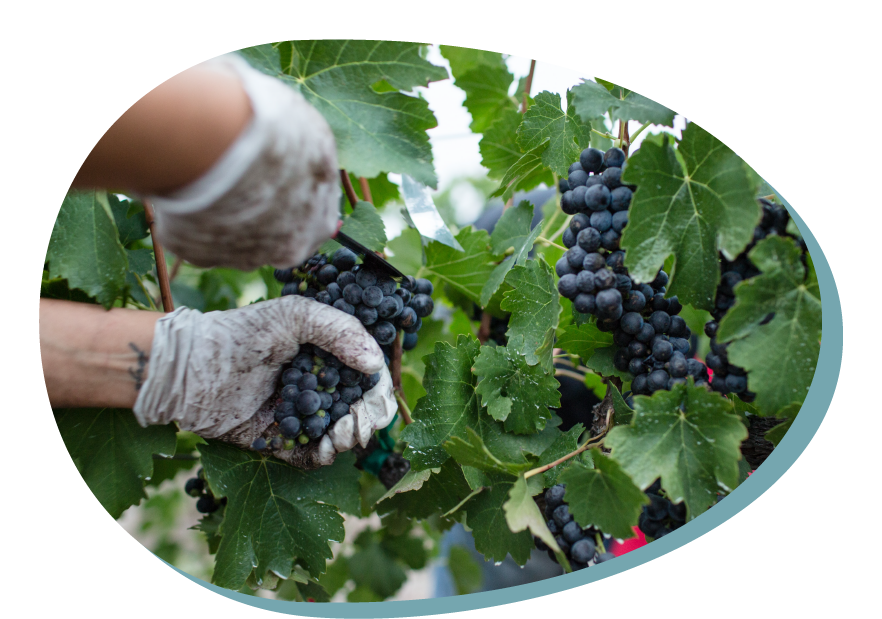Type of resource: website
Web address https://www.fattoincasadabenedetta.it/ricetta/ciambelle-di-mosto-fatte-in-casa-da-benedetta/
Language: EN
Description
To recognise, appreciate and protect ancient knowledge and traditions. To relate with curiosity to practices and habits of ancient or at least past societies. Group activities from harvesting to cooking.
Scientific concept introduced
Density of the liquid, colouring, processing of mechanical disintegration of plant products, mixing of the resulting mass in water, measurement.
Creative and critical thinking
Critical thinking:
Analysis
Observation
Cultivation and harvesting techniques
Creative thinking:
Curiosity
Awareness of different traditions
Memory appreciation
Active group participation
Mathematical reasoning
Measuring
Scientific thinking
Asking questions
Processing a path
Developing the ability to use scientific language
Analysing results
Extracting a liquid
Learning how to learn
-Gathering grapes
-Listening and following instructions
-Collaborating in a group
-Assessing the difference with the contemporary world to the point of managing conscious choices to recover tradition, when it is the bearer of healthy values and natural habits
-Experiencing the senses in close contact with nature
-Experiencing the most significant phases of the grape harvest and the extraction of the must
-Baking must bread
Additional
Exactly follow the steps of a procedure
Carry out scientific observations
Produce an original product
The Must
Overall aims
Knowing how to work in a team
Communicate
Expressing emotions
Telling about the experience
Experience the satisfaction of eating a food that each child has been able to prepare in collaboration with the group.
Hone manual skills and culinary techniques by becoming familiar with the various kitchen tools.
Vocabulary – keywords should be understood
Density of the liquid, colouring, processing of mechanical disintegration of plant products, mixing of the resulting mass in water, measurement.
Expected learning outcomes (operational aims)
the child/student will be able to:
– Carrying out an experiment
– Knowing and appreciating the transformations and mutations of foods
– Telling the story of the experiment
the child/student will have developed the ability to:
– Exactly following the steps of a process
– Making scientific observations
– Making an original product
STEM skills – to which the learning unit is related to
CORE STEM SKILLS
Observe
Doing analysis
Experiment
Analysing the results
ADDITIONAL SKILLS
Working together as a team
Fine dexterity
Listening and understanding
Teaching methodologies/activity outline
Activities:
Visiting a farm prepared to welcome the children during the grape harvest, showing the most significant stages of the grape harvest and the extraction of the must, returning to school with the pressed must, following the recipe, asking the children to prepare the must bread, asking the kitchen staff to bake the must bread in the oven.
Materials:
1200 g flour
200 g sugar
50 g beer yeast
500 ml of grape must
1 glass of extra virgin olive oil
Aniseed and sultanas to taste
Cooker
Instructions:
Take two glasses of wort; dissolve the brewer’s yeast in one and soak the aniseed seeds and sultanas in the other.
Mix the sugar and flour together and then add the dissolved brewer’s yeast, must, oil, soaked aniseed seeds and sultanas.
Knead everything together to form a soft dough and let it rise for two hours.
Knead again and form the loaves, place them on a baking tray and allow to rise again.
Bake in the oven at 200 degrees Celsius for 30 minutes.
Conclusions:
Must bread represents “Food as Culture”, including the effort to recover and enhance ancient traditions. This activity promotes inclusion as it corresponds to group work, thus creating a team spirit of shared efforts, intentions and resources. Knowing and appreciating the transformations and mutations of food. Throughout the activity, the teacher will have photographed the entire process. Once the photos have been printed, organise them on a poster board with a full description of the process.
Assessment of learning
It is implemented through observation of the activity by the teacher who assesses pupils’ commitment and participation.
Equipment and materials to be used in learning unit (tools, ingredients etc)
– flour
– sugar
– brewer’s yeast
– grape must
– extra virgin olive oil
– aniseed seeds, sultanas
– baking oven
– pastry board, bowls and various kitchen tools
Kind of setting
Science laboratory
References – source
https://www.fattoincasadabenedetta.it/ricetta/ciambelle-di-mosto-fatte-in-casa-da-benedetta/
Photo by Vindemia Winery on Unsplash
The Must
1. Usefulness for STEM education – integrating content of different disciplines
Cross-curricular character of the resource

The range of S-T-E-M subjects included

The presentation of possibilities of including artistic activities (STEAM approach)

2. Expected learning outcomes
Consistency (links) with preschool core curriculum

Communicativeness of description

3. Methodology of teaching
Clarity, communicativeness of instructions for teachers

Meaningful learning – using practical life problems

Original idea

The level of ease in implementing the methodology to preschool age children

The level of ease in preparing necessary ingredients, materials and equipment needed

4. Sustainability
Ecological characteristics of materials/ results

Supporting healthy eating habits

Low ecological footprint

Possibilities of inclusion (respecting cultural diversity and food intolerances)

5. Class management
Using differentiated forms of work – individual, team work etc.

Individual work

Team work

Whole group
6. Time management

Short activity (10-15 minutes)

Medium activity (20-30 minutes)

Long activity (1 hour or more)

Very long activity (1 day or more)
PDF: https://www.printfriendly.com/p/g/FNJV7J

